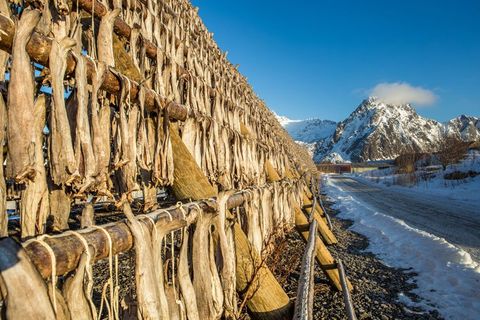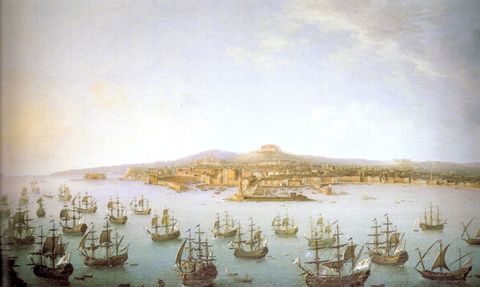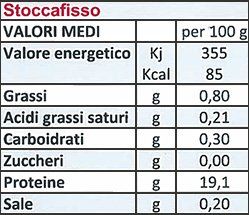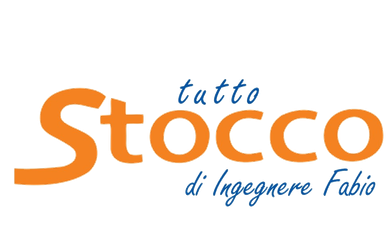Who we are
Tutto Stocco was born from the passion and dedication of Fabio Ingegnere, who spent a lot of time researching the best products and the best quality. Lo Stocco is part of the Calabrese tradition, which has made the fish of the northern seas its own by incorporating it in many of the typical dishes of the region.
Lo Stocco
Natural drying is one of the oldest methods of food preservation. There are documents that attest to this practice in the Northern Seas since the time of Charlemagne (IX century). The dried fish obtained in this way can also be kept for years and is easily transportable and marketable. It was this easy conservation on board ships that made it the main food of the Vikings. The first news on the arrival of the stockfish in Italy dates back to the time of the Normans in Sicily [4] [5] [6]. At the beginning of the sixteenth century the import of dried cod in Calabria from the port of Naples dates back to [7] first documented information is dated 1561. Besides Naples, it was also imported to Genoa and Venice

Conservation and Property
Stocco fish (u pisci stòccu) or stocco, is the basis of many typical dishes of the provinces of Messina and Reggio Calabria. In Sicily it was known since the sixteenth century, due to the Dutch ships that stopped at the port of Messina. In Calabria at the beginning of the seventeenth century, dried cod began to be imported from the port of Naples, capital of the Kingdom to that of Reggio. But it was with the earthquake of the Strait of 1908 that the tradition was renewed, thanks to the Norwegian ships that arrived at the port of Messina to help the populations of Messina and Reggio. From Reggio the boats reached the small port of Pizzo, from where through the muletracks of the time, on the back of a mule, the Stocco arrived in Mammola, the "town of the rapier" as it is called, and even today after the traditional "soaking" and the processing craft, was sold throughout the province of Reggio. The most renowned and appreciated Calabrian Stocco is still the one produced in Mammola (so much so as to have obtained the highest recognition from the Ministry of Agricultural and Forestry Policies Suppl. Ord. Gazzetta Ufficiale N ° 167 of 18-7-02 pag. .13 # 201 with the inclusion in the list of traditional Italian food products). The "Stocco di Mammola" is "soaked" in the water of the place, which in a short time makes it edible; the water rich in particular mineral substances such as calcium, iron magnesium, together with ancient artisan processing techniques allows to obtain excellent results. The dried Stocco Fish is imported from Norway. Cittanova is also considered a center specialized in soaking and processing this dish; some city-based companies supply the raw material, stocco, in Calabria.
Conservation and Property
Stockfish is a food rich in protein, vitamins, iron and calcium salts. The preparation of stockfish is comparable in some ways to that of other seasoned food products, such as hams or cheeses. The fish is prepared immediately after capture. After having beheaded and cleaned, it is dried whole or open along the spine, leaving the halves joined by the tail. The fish is then placed on the supports and left in the open air from February to May; the cold and dry climate typical of those months on the Scandinavian peninsula - the ideal is a temperature just above zero degrees, without rain - protects the fish from insects and bacterial contamination.





